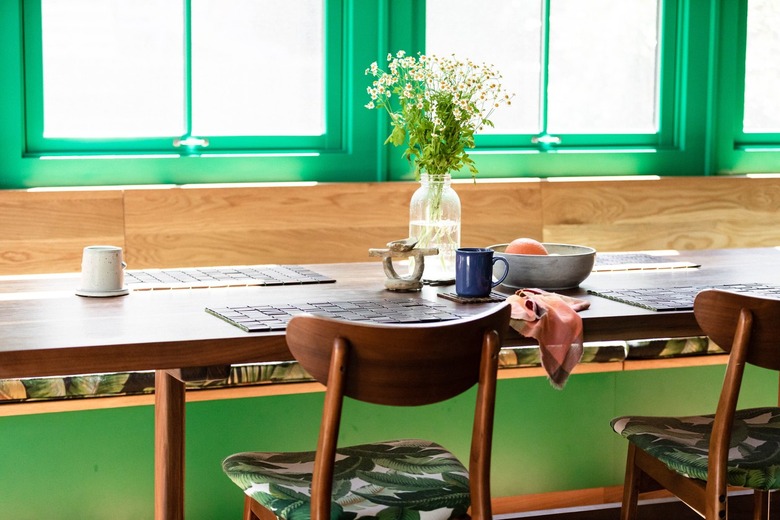Here's How To Choose A Color Scheme With Confidence And Ease
When refreshing a space or doing a top-to-bottom makeover, we believe that color ideas should be pretty high on your list of priorities. Color has the power to completely change our moods. Soothing blues and greens can make us feel relaxed, while yellows and oranges can increase energy. And if you're going for a certain vibe in your space, your palette is the most effective way to achieve that.
You may be drawn to one color scheme over another, but did you know that there's a science behind it? Read on to learn all about color schemes and how to put them to work in your abode.
What Are the Different Types of Color Schemes?
What Are the Different Types of Color Schemes?
Color theory defines a color scheme by simply saying that it's a combination of hues used in design, art, and beyond. There are six different types.
- Monochromatic: You may already be familiar with
this term since it's an approach that's been popular in recent years; a monochromatic color scheme is when a room displays variations of the same color. - Complementary: This color scheme features hues that are across from one another on the color wheel,
like purple and orange and red and green. - Analogous: These colors are right next to each
other on the color wheel, such as yellow
and orange. - Triadic: This color scheme consists of three hues
that are equally distant from each other on the color wheel, forming the shape
of a triangle — one example is yellow, red, and blue. - Split-complementary: A split-complementary scheme
mixes together a single color with its complementary color, and then the two colors
on either side of it — yellow and blue-violet would go with red-violet, for
example. - Tetradic: This double-complementary color scheme consists
of two complementary pairs, resulting in a rectangle shape on the color wheel — that means that green and blue go with orange and red.
How Do You Choose a Color Scheme?
How Do You Choose a Color Scheme?
So, that might feel like a lot of information to take in if you're currently swimming in color ideas for your home. Luckily, there are ways to narrow your options down to arrive at a perfect palette.
For starters, how do you want the rooms to work with one another? Although you may be partial to an orange room here and a purple room there, it's usually better if you settle on a general scheme for the whole home to create a cohesive feel. Or, choose one color scheme for upstairs and one for downstairs.
Decide where you're going to start. You can either begin with your wall color to anchor and solidify the rest of the room, or, you can start with furniture and decor and pick a wall color after that. You can pull in colors from a pattern as you set your scheme. For example, an area rug or a piece of artwork can inspire a palette for the entire space.
Consider the "rule of three." To designers in the know, this means limiting your color scheme to just three colors. This can prevent the space from looking overwhelmed by a myriad of hues.
What Factors Do You Need to Consider?
What Factors Do You Need to Consider?
As you put together your home's color scheme, there are additional factors to ponder as well. For instance, we're all for on-trend hues, but a more timeless look that will outlast the ever-changing color of the year, might be worth considering. A monochromatic color scheme is definitely the easiest to pull off, since it displays variations of the same color. Remember, darks and lights tend to play nicely together, offering interesting contrast in a space.
You can always tone down the bold hues of your color scheme by including pops of neutrals — a throw blanket, carpeting, or furniture in neutral shades can bring things down a notch if you don't want to be quite so risqué with your palette.
Last but not least, honor your decor as you select a color scheme. For example, if you love farmhouse, perhaps a more neutral palette would be the best complement. Or, if you're a Bohemian enthusiast opt for warm, toned-down hues. At the end of the day, you want your home to feel comfortable and be a reflection of your personality and style.



